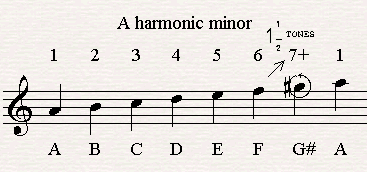

And that is – Whole Steps and Half Steps. Understanding the minor scale is the same process used with other scales. This practice goes hand-in-hand with the learning of all the major scales as well. In general, a melody written in G major is felt to return to home base when it comes back to the note G.įor any beginner or intermediate musician, it is a requisite to learn about minor scales. The first note of the scale becomes the tonal center. A piece of music written in the key of G major is oriented towards the G major scale. Tonality helps us describe the emotions we hear within the music.Ī tonal center is defined by a scale. These are the two most common names for tonality. When we listen to a piece of music it may sound happy, cheerful, or sad and dark. Tonality in music is the relationship between the notes and harmonies of a composition. Let’s wrap up with a couple of neoclassical shred–style runs based on A harmonic minor’s fifth mode, E Phrygian-dominant (E F G# A B C D), which is formed by starting on the fifth scale degree of A harmonic minor (see FIGURES 5 and 6).Understanding the minor scale starts with the concept of tonality. I then switch to eighth notes and finish the phrase with a descending melodic pattern based on thirds.įIGURE 4 offers a sweep-picked arpeggio run that incorporates the use of a “tap-and-slide” at the top: using the edge of the pick, I tap the high E string at the 19th fret, slide up to the 20th fret and then back to the 19th, followed by pull-offs. FIGURE 3 illustrates an A harmonic minor single-note run that begins with eighth-note triplets and gradually works its way up through the scale. Doing this with the first note of A harmonic minor gives you what’s called an A minor–major seven chord (Am-maj7).įIGURE 2 shows this chord played in 12th position. Harmonizing a scale to form three- or four-note chords is a great way to get acquainted with the scale’s unique quality.


In my studies, I look at the major, harmonic minor and melodic minor scales as being three unique formulas of whole steps and half steps, from which one can devise seven different permutations. In the same way that musicians learn the major scale’s seven modes-by starting on any of its given notes, thinking of that note as the root, or “one,” and playing up one octave and back through the notes of the “parent” scale-one can also generate seven modes from the harmonic minor scale (and melodic minor too).


 0 kommentar(er)
0 kommentar(er)
